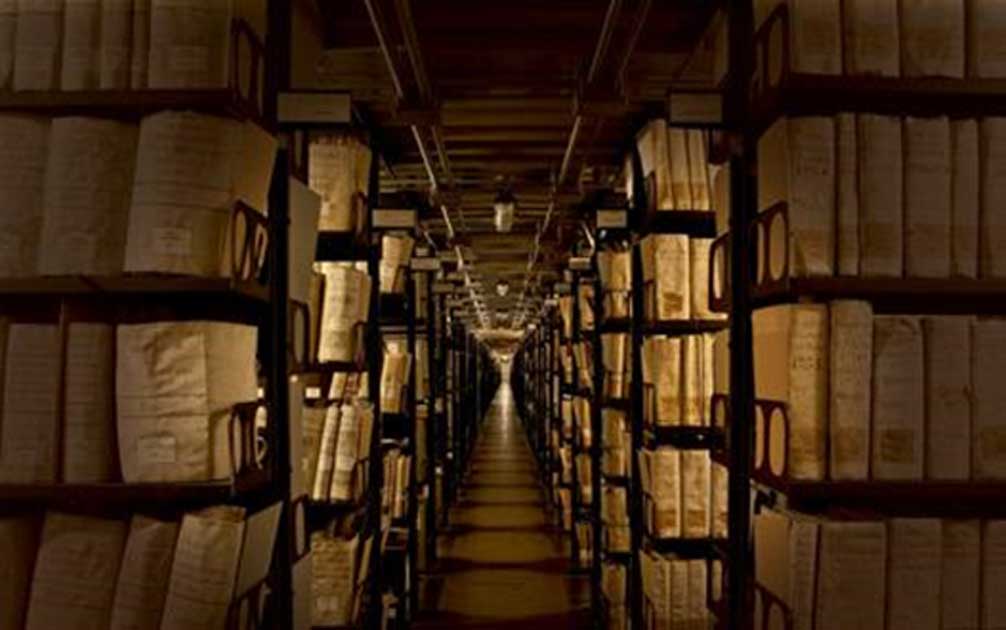There are fifty-three miles of shelving in the Vatican Secret Archives. They house thirty-five thousand volumes of catalogue. And that is twelve centuries worth of documents. The Vatican’s Secret Archives houses one of the most iconic bastions of religion and culture ever.
While it might sound like a stuff of a historical legend, the vault is absolutely real. Just the name of the vault invokes mystery of the Catholic Church.
The central repository in the Vatican City, the archives contain the state papers, correspondence, papal account books, and many other documents the church has accumulated over the centuries. In the 17th century, under the orders of Pope Paul V, the Secret Archives were separated from the Vatican Library. Most scholars had limited access to them, and they remained closed to outsiders until 1881, when Pope Leo XIII opened them to researches.
The Mistranslated name
One of the reasons there is so much legend and mystery around the archives is mistranslation of the name. The actual name of the Vatican Archives is “Archivum Secretum Apostilicum Vaticanum” Secretum in Latin does not mean secret, as most people assume. Instead, the more accurate translation is “personal” or “private”.
![]()
Therefore, a better assumption is that the archives are made up of private letters and historic records of past popes over the past four centuries. The archives were established by Pope Paul V, who had a clear sense of historic importance of papal correspondence and knew such documents should be preserved.
The world sees the Archives for the first time
The archives were closed for outsides, and very few scholars had access to them in the beginning. In 1881, Pope Leo XIII decided to change that. He allowed researches to view some of the archive’s contents.
However, it was no simple matter for someone to view the documents. The procedure has not changed over the past 200 years. Students, amateur historians, and journalists are still forbidden access. When an interested party has proven that he or she is a serious enough scholar, he is granted credentials. They must be renewed every six months, and to enter the archives, scholars need to enter through Porta Sant’Anna, pass Swiss Guards, and walk through the Cortile del Belvedere.
Once they are admitted into the archives, they must request which specific document they wish to review. Scholars are allowed three documents per day. That means they are not able to browse the contents of the archive, they must select articles from catalogs in which items are handwritten in Italian or Latin.
Unique historical records
With that in mind, most of us are interested what is actually inside the Vatican’s Secret Archives. Here are some unique piece of documents found inside.
– The document that began the protestant reformations: Pope Leo X’s 1551 decree excommunicating Martin Luther
– 1530 petition from 85 English clergymen and lords asking pope Clement VII to annul King Henry VIII’s marriage to Catherine of Aragon. Clement refused, which led to the establishment of the Anglican church
– Michelangelo penned a letter to the pope warning that Vatican guards hadn’t received paychecks in three months, and that they were threatening to walk off the job
– One year after Columbus landed in what became North America, Pope Alexander VI issued Inter Cetera, a 1493 papal bull that split the new world between Spain and Portugal
– Letters from Abraham Lincoln and Jefferson Davis, who tried to convince Pope Pius IX that the South was an innocent victim of Northern aggression. Neither one of them was a Catholic
– The doctrine of Immaculate Conception, or the notion that Mary was conceived without original sin, which as articulated on a piece of parchment in 1854
– Famous Vatican trials, including cases against the Knights Templar in the early 14th century and against astronomer Galileo Galilei in the 17th century
– Letter to Pope Sixtus V from Mary, Queen of Scots, begging the Church to intervene shortly before her execution
– Letter from Pope Clement XII to the Seventh Dalai Lama requesting protection for Franciscan missionaries in Tibet
Will we see what is inside?
The good news is that current pope, Pope Francis, is considering when to open the full archives of Pope Pius XII. He is thinking about the idea of expanding the archives.
In 2017, he told Jewish leaders in Vatican that he has instructed the Vatican Secret Archives to unseal a set of ancient scrolls that are said to contain the true name of God as communicated to Moses in the Book of Exodus.



